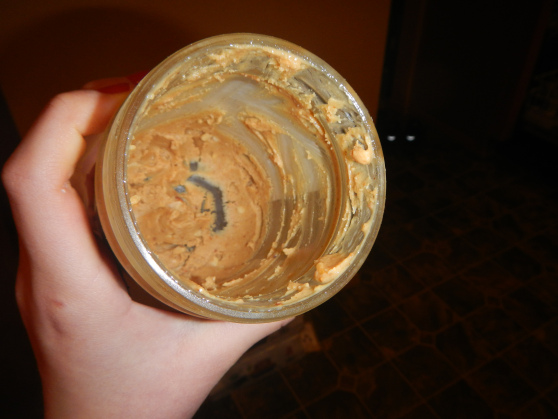…binding myself under no less a penalty than that of having my throat cut across, my tongue torn out, and with my body buried in the sands of the sea at low-water mark… —Masonic oath
His oath, His covenant, His blood…
—Edward H. Mote
Those Bloody Oaths
 Oaths have always been bloody business. A man who swears an oath calls down upon himself the violent judgment of God should he violate the terms of that oath. There was a time when the world understood this. True, sometimes that “god” was immanent in the State, and an oath-breaker who had sworn by life of Pharaoh or the genius of the Emperor might expect the violent judgment to come immediately from the god-man on sat on the throne or his appointed agent. But divine wrath was a certainty for the man who broke his oath: that was the point of swearing. After all, if all the parties involved were willing to trust human integrity or good intentions, a simple promise or affirmation would have been sufficient.
Oaths have always been bloody business. A man who swears an oath calls down upon himself the violent judgment of God should he violate the terms of that oath. There was a time when the world understood this. True, sometimes that “god” was immanent in the State, and an oath-breaker who had sworn by life of Pharaoh or the genius of the Emperor might expect the violent judgment to come immediately from the god-man on sat on the throne or his appointed agent. But divine wrath was a certainty for the man who broke his oath: that was the point of swearing. After all, if all the parties involved were willing to trust human integrity or good intentions, a simple promise or affirmation would have been sufficient.
The atheist and the agnostic cannot swear an oath in any meaningful way. They know no God who can search their hearts, judge their actions, and call them to account. Secular humanism has no place for oaths, except where those oaths are understood to be promises made to the State and rigorously enforced by the State. Any other oaths that linger in the Western secular world are largely a matter of form and tradition. Even the secret oaths of the Freemasons are just not what they used to be: “Just allegories,” we’re told, “just allegories, nothing more.”
Oaths are basic to biblical faith, however. The God of Scripture swears by Himself, and He calls His people to swear by His name as an act of worship and an expression of loyalty. But more than this, God’s intimate relationship with His people exists in terms of an oath, a covenant oath.
Covenants, Hittite and Otherwise
Research into covenant thinking saw a major revival in the last century. Extant records of Hittite suzerainty covenants seemed to yield the most insight into the basic structure and meaning of secular covenants and even, to some degree, of biblical covenants. Professor George E. Mendenhall has identified six sections in the normal covenant structure of ancient Hittite treaties: a preamble that identifies the lord (suzerain) and vassal; a historical prologue that explains the background and rationale for the covenant; the obligations placed upon the vassal by which he will show his gratitude to his lord; a list of witnesses to the covenant, including all the relevant gods and goddesses; the sanctions the vassal should expect in return for his loyalty or infidelity; and the oath of compliance. He writes, “A treaty is a text, but an oath is the actual mechanism whereby the text is ratified and brought to life, no longer just words in a document but a functioning reality in the lives of actual people” (Ancient Israel’s Faith and History, 69). Scripture bears witness to this principle when it equates “covenant” and “oath” (Gen. 26:28; Deut. 29:12, 14; Ps. 105:9).
Why Covenants are “Cut”
Covenants, like the oaths that create them, are matters of life and death. The rending of a covenant bond is like rending a body: the result may be horribly bloody. To drive this home, covenanting parties in the ancient world often set out their covenant in blood. In fact, the Hebrew words for making a covenant literally mean, “to cut a covenant.” O. Palmer Robertson has defined a covenant as “a bond in blood.”
We have a sketchy description of a covenant cutting ceremony in Jeremiah 34. The passage is set during the reign of Zedekiah just before Jerusalem fell to the Babylonians. In order to divert God’s judgment, the rulers of Jerusalem and the people of the land had made a covenant with the Lord: they had sworn that they would release their bondservants at the end of six years as the Mosaic law required. Jeremiah says they made this covenant “when they cut the calf in twain, and passed between the parts thereof” (Jer. 34:18-19).
They cut the covenant: they cut it in the divided carcass of the slain calf. They didn’t keep the covenant, however. In consequence, Jeremiah said that the LORD would give them into the hands of their enemies and their dead bodies would be “meat unto the fowls of heaven, and to the beasts of the earth” (Jer. 34:20). In other words, when these men walked the bloody path between the calf-pieces, they swore a self-maledictory oath. In effect, they said to God, “If we break this covenant, may we be torn in two like this calf and may our flesh be fed to the fowls of heaven.” God took them at their word.
God’s Covenant Oath
There is a more profound example of covenant cutting ceremony in Genesis 15. The LORD came to Abram by night; He assured Abram that he would have a son as He had promised. The LORD called Abram out underneath the heavens and, drawing his attention to the stars, said, “So shall thy seed be.” We are told that Abram believed God and that his faith was counted to him for righteousness. God went on to say that He had brought Abram into that land so that he might inherit it. Yet Abram asked for more assurance: “Lord God, whereby shall I know that I shall inherit it?”
Then the LORD initiated a covenant cutting ceremony. He told Abram to collect five sacrificial animals—a heifer, a female goat, a ram, a dove, and a pigeon. He told Abram to kill the animals and divide their carcasses (except for the birds). Abram obeyed, but as he waited to see what God would do, the fowls come down to devour the carcasses. Abram drove them away.
Here’s where it gets weird: Abram, the vassal, didn’t walk the bloody path. Rather, as night came on and darkness engulfed the whole setting, Abram fell into a deep sleep. Then two things happened. First, God spoke to Abram and reaffirmed His promise of the seed and the land. That is, God specified His own obligations in this covenant relationship. Second, a burning lamp passed between the animals. This was the Shekinah glory, the manifestation of God’s presence. God took the covenant oath upon Himself. By passing through the divided animals, He said in effect, “If I let this covenant fail, may I die; may I be torn in pieces and my flesh fed to the fowls of heaven.”
We can understand God’s covenant oath in one of two ways: both are consistent with Scripture. We can say that God can’t die, and therefore His covenant promise is sure. Or we can say that God is promising that He will find a way to die—to bear all the curses of the covenant—rather than let His covenant promise fail. Either way, the covenant oath is unilateral. God swears that He will maintain the covenant, even through blood. His commitment is unto death—His own.
God’s Miraculous Promise
Some time afterward, however, God placed His oath in the flesh of His covenant people: He imposed the bloody mark of circumcision on Abram—now Abraham—and the males in his household (Gen. 17). Circumcision was a seal and a sign, both a legal claim and a powerful message cut in blood. Circumcision said that there was no hope in natural generation: that which was born of the flesh was merely flesh and under God’s judgment (John 3:6). Abraham and his natural seed needed a new birth, a Spiritual one. They needed the transforming power of the Spirit of God. That power would come through the Seed, the Messiah, who would certainly not be born through natural generation. His birth would be a miracle—divine intervention into human history. This Seed would bear the bloody curse of the covenant to provide Spiritual life to His covenant people. In other words, the Seed would be the covenant-making God Himself.
Every circumcised male bore this preaching of the gospel in his flesh. Every circumcised male was thus consigned by God to covenant faith and obedience. In other words, God bound His people to Himself by blood, and the only way out of that bond was through blood—their own. God’s covenant, then and now, was gracious and full of love, but it was not a light or frivolous thing. The bonds of God’s covenant were and are terribly serious. The coming of Christ hasn’t changed this: it is still “a fearful thing to fall into the hands of the living God” (Heb. 10:26-31).
The Sociology of the Covenant
The modern world has no place for oaths and so no place for covenants. Yet covenant is a God-given reality and a reflection of the Trinitarian life of God Himself. And, in fulfillment of His oath to Abraham, God has placed all the nations and families of the earth under the covenant authority of the Messiah (Matt. 28:18-20). Christ is the Lord of church, State, and family. Any attempt to make sense of these institutions must take into account their covenant nature and structure. Any attempt to reform them must reckon with their covenant Suzerain, Jesus Christ. His oath, His covenant, His blood, provides the only basis for true social transformation and regeneration. Only in Him can all the families of the earth be blessed. God swore that with His own life.
For further reading:
Ray Sutton, That Ye May Prosper, Dominion by Covenant (Tyler, TX: Institute for Christian Economic, 1987).
O. Palmer Robertson, The Christ of the Covenants (Phillipsburg, NJ: Presbyterian and Reformed Publishing Company, 1980).
Roderick Campbell, Israel and the New Covenant (Phillipsburg, NJ: Presbyterian and Reformed Publishing Company, 2010 rpt.)
If you liked this article you may be interested in this product from our sponsor.










